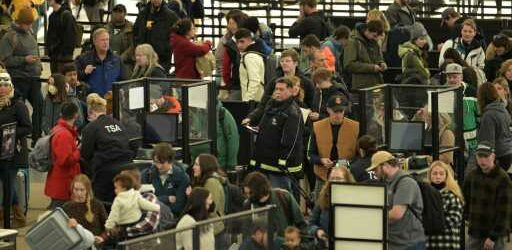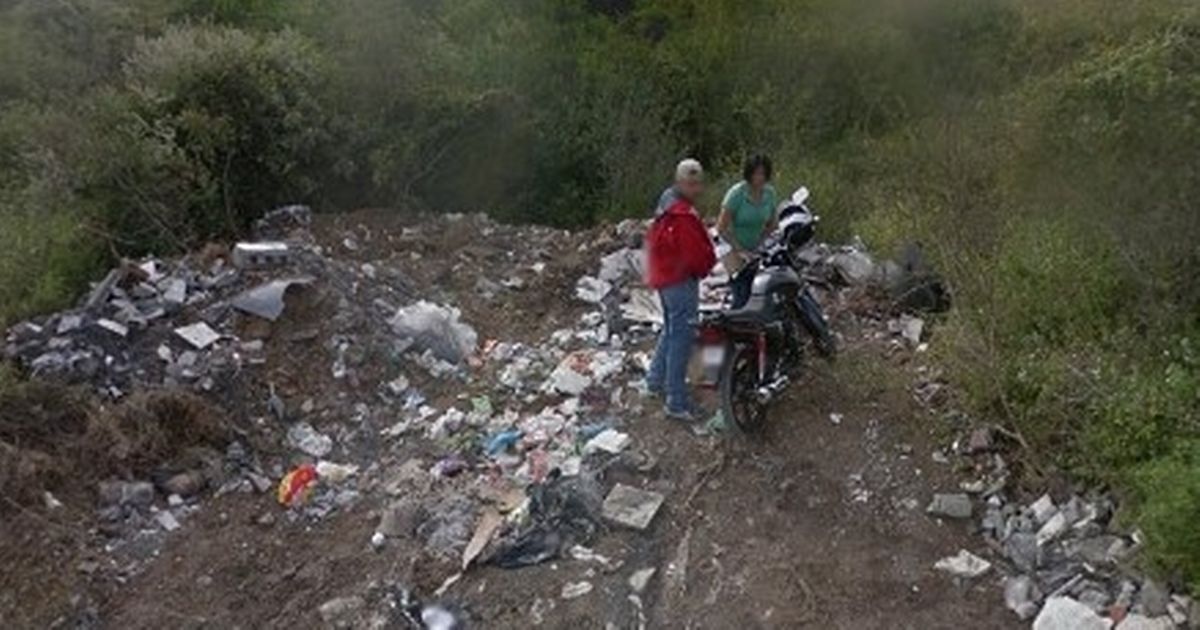Stress-inducing security waits long have been Denver International Airport’s most notorious feature, and they’re getting worse as the summer travel season begins.
DIA forecasts that more than 400,000 passengers will pass through its three security checkpoints over the Memorial Day holiday weekend, from Thursday through Tuesday. Some days will see 70,000 people screened, the airport says.
Anyone who’s been through lately knows the lines have been growing at the busiest times in recent weeks.
“I am still completely dumbfounded at how bad it was,” Minnesota resident Jill Burcum wrote in a recent letter to the editor published by The Denver Post about her experience flying out of DIA on a Friday two weeks ago. She had trouble finding the end of the snaking line and said she couldn’t find someone to direct her.
Aubrey Roth, the airport’s terminal operations manager, acknowledged that her team and the Transportation Security Administration were caught a little off guard on two days at the end of that week, as seasonal checkpoint volumes surged a little sooner than expected.
At one point, the line for the south main checkpoint, which is primarily for standard screening and is nearest to the Westin DIA Hotel and transit center, was backed up a full hour, she said, wrapping around the baggage claim and outside to the curb of the pick-up lanes. The line for the checkpoint on the bridge to Concourse A stretched 66 minutes, she said.
Since then, the TSA and Roth’s line-management teams have tweaked staffing plans and made other adjustments that she says have averted a recurrence.
“It was kind of an early learning curve on how we need to embrace summer travel volumes,” Roth said. She oversees staff members and a contracted team that stays in touch with TSA agents throughout the day and directs travelers to the checkpoints with the shortest waits.
Here’s a look at why those lines are so long at fast-growing DIA — and what’s on the horizon, including near-term and long-term relief.
Why DIA’s security waits are so bad
Unlike some large U.S. airports that have decentralized security checkpoints for different concourses, DIA’s original design — with a single terminal connected by train to all concourses — is partly to blame.
A multi-year $2.1 billion terminal renovation made things worse by closing a portion of the north main checkpoint, but adjustments since then have replaced the handful of lost screening lanes by squeezing them in elsewhere. Still, travelers face construction walls that block some pathways to the checkpoints.
The busiest days at DIA typically are Sundays, Mondays, Thursdays and Fridays, with morning and late-afternoon peaks at security, ahead of banks of scheduled departures. During the spring, Roth said, the longest waits have not gotten longer than an hour or so.
Are security lines getting worse?
In some ways, the security checkpoints and lines are running more smoothly than in the past, thanks to revamps of the checkpoint setup and efforts to better direct passengers. But DIA’s passenger traffic also is growing quickly — it was up nearly 14% in March over the same month last year, and DIA’s holiday weekend travel projections were ahead of Memorial weekend last year by 9.4%, with summer travel projections trending high nationwide.
DIA’s major airlines also are adding flights to take advantage of more than three dozen new gates it’s opened in recent years, promising growing numbers of passengers lining up.
“You know, that’s the biggest challenge right now — long lines” at security, United Airlines CEO Scott Kirby said Tuesday at DIA after an event spotlighting United’s growth in Denver. “And so, we’re going to need to do more. I don’t know what all the answers are, but I think (DIA has) a good team to help solve these challenges.”
So what has improved?
Eighteen months ago, DIA and TSA officials reshuffled the checkpoint setup by moving most screening of passengers with TSA PreCheck memberships to the north main checkpoint. Roth says that has made screening more efficient for everyone, including those who go through standard screening, even if it might not always appear that way.
In the last year, the TSA has filled dozens of vacant agent positions, closing a gap that kept it from opening the checkpoints fully last summer without help from a national staffing reserve.
“We’re definitely in a better place than we were a year ago,” Roth said, though some of the new TSA agents are still being certified.
DIA also has added signage and people to direct passengers along the most common pathways to the checkpoints, including as they exit check-in areas, she said. A year ago, the airport signed a $7.2 million, two-year contract with contractor American Automation Inc. for its Total Queue Management service.
Roth says at least six TQM team members are on the floor for 16 hours a day, using up-to-the-minute information about checkpoint waits to direct passengers to the right one. They typically wear purple shirts with the service’s log on them.
“I know (the lines) can be perceived as long, or as chaos, or difficult,” Roth said. “But we really are working to make it the best we can.”
How to navigate security now
First rule of thumb: Especially on busy days or near holidays, DIA recommends that passengers arrive at the terminal at least two hours prior to their scheduled boarding time — not their flight’s departure time — to avoid stress.
Under the latest security setup, the south main checkpoint on Level 5 is primarily for standard screening, with limited lanes set aside for PreCheck and a lane for Clear members, though it’s meant for those without PreCheck. It’s also the only checkpoint open 24 hours a day and is the only option for any traveler between 7:45 p.m. and 4 a.m.
The north main checkpoint, which has nine lanes on Level 5, is primarily for PreCheck members or passengers with an airline premium-access status, with a Clear lane also provided and a limited number of standard screening lanes.
The A-Bridge checkpoint, which has up to nine lanes on Level 6 and closes at 5:45 p.m. each night, is standard screening-only.
DIA displays live wait estimates for each checkpoint on its website, www.flydenver.com, though Roth cautioned that wait times beyond 30 minutes are more difficult for the automated system to estimate because of the limited reach of its cameras.
When in doubt, seek out an airport employee, or if possible, one of the purple-shirted TQM staff members.
When is relief coming?
In the next month or so, DIA has two changes in store. The first, which launches June 1, is called DEN Reserve and allows passengers to schedule a screening time at the A-Bridge checkpoint — for standard screening only — ahead of time or when they arrive at the airport. To use it, go to den.whyline.com.
The bigger change is expected by the start of July, with the addition of four more screening lanes to the south checkpoint — offset in an adjunct area closer to the center of the terminal. Roth says it will provide a “temporary relief valve” at busy times, with passengers screened in those lanes exiting into the same post-security access point to the concourse train as travelers leaving the normal lanes.
But the biggest change for screening is coming early next year.
The Great Hall terminal renovation project’s components include adding two new, larger screening areas on Level 6 of the terminal, overlooking the current north checkpoint and taking the place of former check-in areas. The first of those new screening areas — called the west checkpoint — is on track to open during the first three months of 2024, DIA officials say.
It will have 17 screening lanes, and it will replace the north checkpoint, for a net increase of eight screening lanes.
“It won’t be perfect yet,” Roth said, but the new checkpoint will have more modern and efficient screening technology, speeding up screening. “That absolutely helps it to get better. It’s so key to what and where we’re going.”
In 2026, the new east checkpoint, in the northeast corner of the terminal, is scheduled to open, replacing both south security and the A-Bridge checkpoint. DIA officials have said the new checkpoints will be able to handle crowds better and will be built to accommodate the airport’s growth — depending on how fast it comes.
Staff writer Megan Ulu-Lani Boyanton contributed to this story.
Source: Read Full Article

